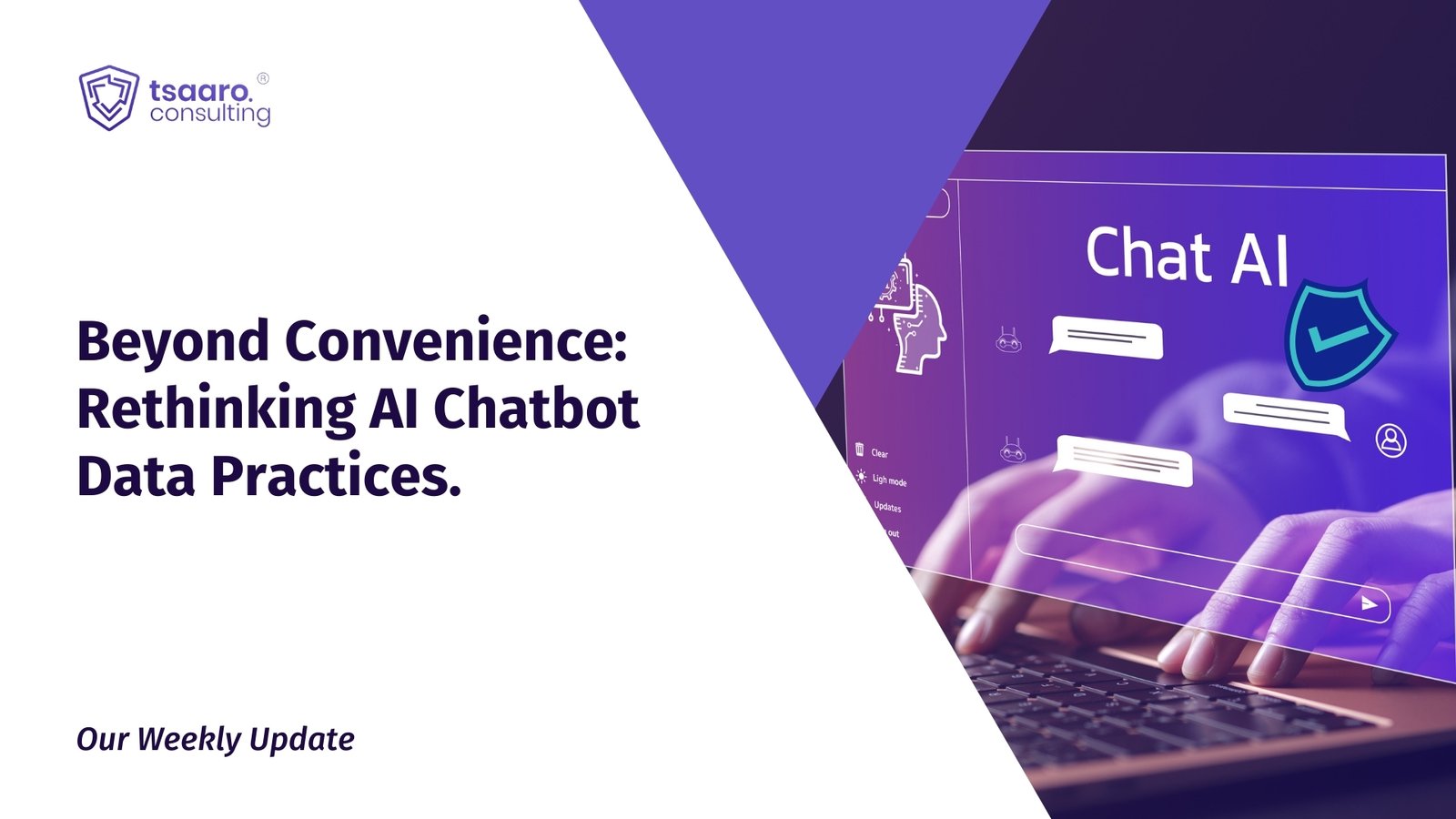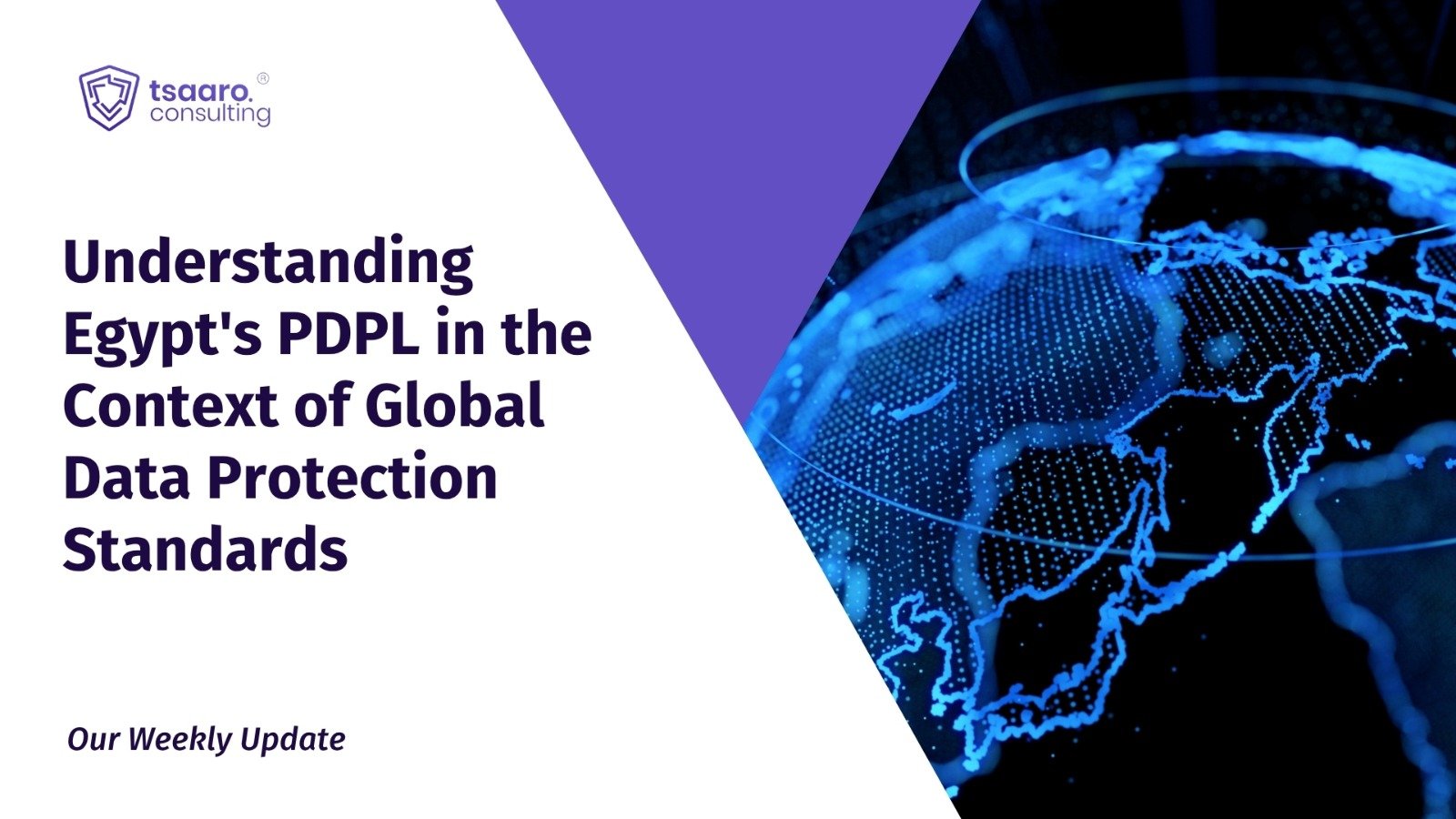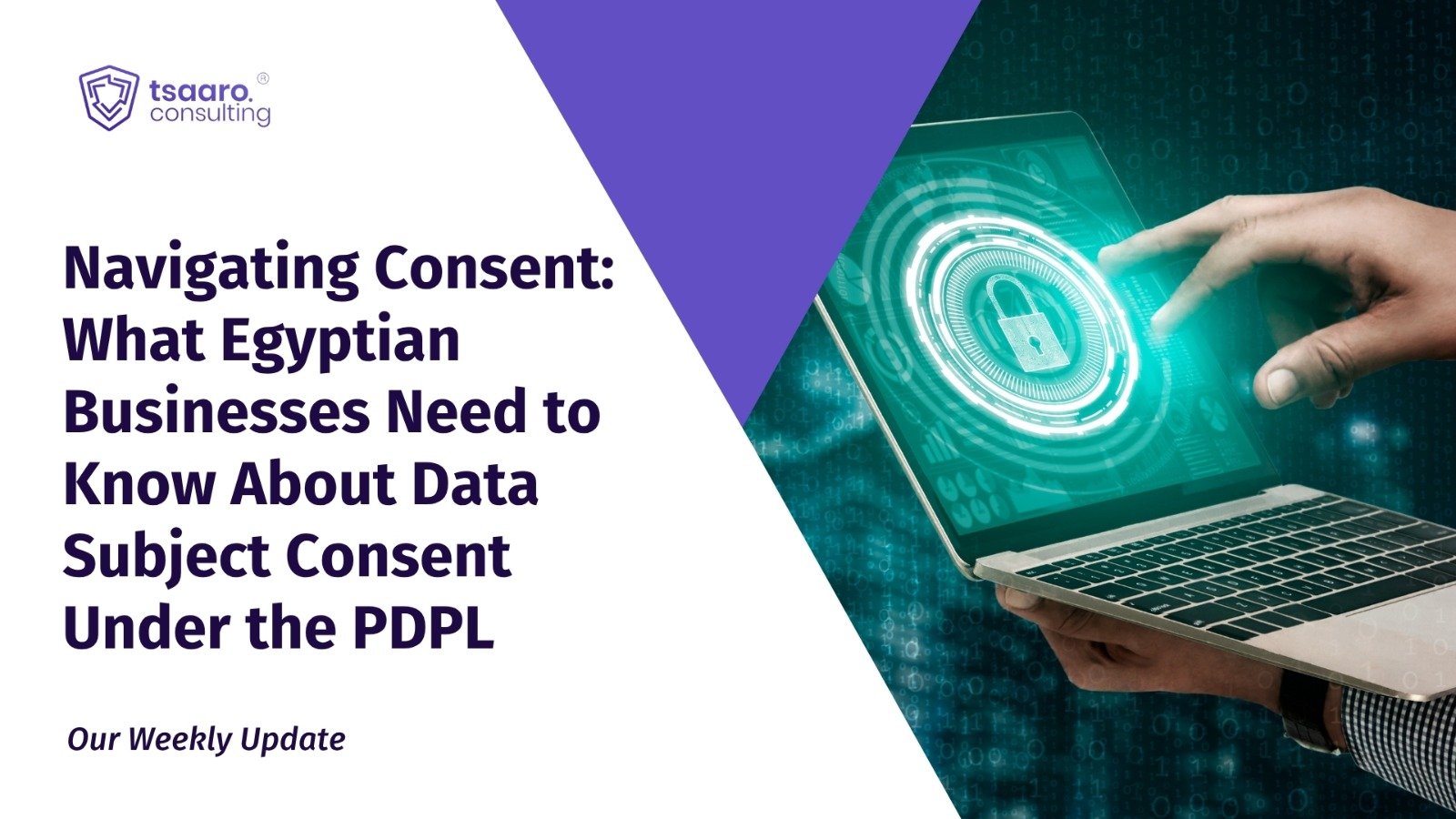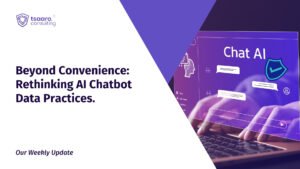Introduction
Artificial intelligence chatbots and voice assistants have quickly integrated into our daily lives answering questions, transcribing meetings, and automating tasks. However, allowing AI chat systems to record our conversations raises serious concerns. Recent incidents show how easily private chats can turn public or be stored without our awareness. Meta’s new AI chat app mistakenly made user’s personal queries visible to the world, a situation described as a privacy nightmare. In other cases, voice assistants like Apple’s Siri were found to have inadvertently captured sensitive discussions even medical and personal conversations due to accidental activations. These situations clarify why AI chat systems should not be permitted to record conversations. They breach trust and privacy, muddle consent, facilitate data misuse, and raise ethical and legal red flags.
Consent Ambiguity
At the core of the issue is the ambiguity surrounding consent. Are users truly providing informed permission to be recorded, or are they being swept into surveillance unknowingly? Often, consent is buried in lengthy, jargon-laden terms of service, or it’s implied through device usage far from the specific, revocable, opt-in consent required under ethical standards. A class action lawsuit filed against Amazon’s Alexa proves the danger of vague consent. Plaintiffs claimed that Alexa devices were recording conversations without the knowledge or approval of those speaking including guests and children violating all-party consent laws in several U.S. states. Once activated, the device captured and transmitted all nearby speech to Amazon’s servers. The concern is not just for the primary user, but for bystanders and anyone else in the vicinity who never agreed to be recorded. Google Assistant has also been caught activating unintentionally after misinterpreting common phrases as wake commands, leading to inadvertent recordings. In many cases, users are unaware that the device is even listening.
Data Retention and Profiling Risks
The permission to record also opens the door to unethical data retention practices, raising the stakes for privacy violations. Once recorded, conversation data can be stored indefinitely and analysed for user profiling, advertising, and more often without the user’s informed awareness. Data retention further leads to companies using data [without user consent] to build profiles and predict behavioural patterns. Similarly, Google’s voice assistant data has been used to refine machine learning models, raising eyebrows when it became apparent that even accidental activations were reviewed.
Retained voice or text data can reveal more than just the spoken content emotional tone, stress, health cues, and demographic characteristics can all be inferred. Over a period of time retention of AI chat logs can essentially turn into surveillance systems that watch and learn from users. Moreover, children’s data has also been targeted. The U.S. Federal Trade Commission fined Amazon $25 million in 2023 for violating the Children’s Online Privacy Protection Act, citing Alexa’s indefinite retention of kids’ voice recordings. The case showcases how tech companies not only store this data but also use it to train AI systems directly contradicting deletion promises made to users leading to se.
Legal Interpretation
From a legal standpoint, unauthorised AI recordings are increasingly being viewed as electronic eavesdropping or wiretapping, which is potentially illegal in many jurisdictions. While traditional laws didn’t foresee AI chatbots, courts are applying them to AI-related conduct. In California, the Invasion of Privacy Act [CIPA] prohibits recording a conversation without all parties’ consent. Courts have clarified that this applies regardless of whether the recording is done by a human or a machine. A recent lawsuit Valenzuela v. Nationwide [2024] accused a chatbot of intercepting and saving user chats using a third-party service without consent. The court allowed the claim under wiretap statutes, showing that AI-driven data capture is not exempt from surveillance laws. Similarly, Apple settled a lawsuit for $95 million after Siri was alleged to have recorded users without permission, violations brought under the Electronic Communications Privacy Act and state wiretap laws.
Regulatory Challenges-
Setting a common standard of regulatory framework for AI has challenged traditional law making and enforcement. Even the most celebrated laws in theory are challenged by technical opacity and cross-jurisdiction enforcement.
- The Black Box Problem:
Many AI models are opaque. At times developers cannot explain why the model responded to an input in a certain way. This opacity makes regulatory enforcement difficult. Traditional legal frameworks assume human intent that can be examined. With AI, regulators find that rules built around human decision-making “face challenges when confronted with AI’s Black Box nature,” complicating how to assign liability. Similarly, to enforce a no-recording rule, regulators might demand audits of AI systems. Such a task would require expert insight due to the model’s complex nature to ensure it isn’t retaining memory of conversations.
- Lack of Trained Regulators
Effective enforcement needs knowledgeable watchdogs. Currently, there is a shortage of regulators and auditors who truly understand AI systems. Data protection authorities are hiring tech experts on a massive scale, but the demand outstrips the supply. The difficult assessment of AI coupled with lack of people with such expertise, leads to weak enforcement or inconsistent outcomes. This calls for capacity by building in regulatory agencies to verify compliance, such as through algorithm audits and code inspections.
- Cross-Border Data Flows
A European regulator can order a company to stop processing EU user’s conversation data but if that data resides on a U.S. server, and the company has no EU office, enforcing that order is challenging. Cross-border investigations take years, during which a lot of user data could be recorded and exploited. Various legal practises across the globe create loopholes, an act forbidden by one country can be permissible by another. Jurisdictions have recognised these loopholes and moved towards fixing them, for instance, the OECD AI Principles and G7 ‘s recent discussions on AI governance. Conclusively, a cohesive global enforcement regime remains to be introduced in the distant future.
Addressing these challenges requires investment in AI transparency techniques and training regulators. This can potentially lead to interdisciplinary roles [combining law & data science] as well as prompt international alignment on AI norms.
Ethical Use & Third-Party Vendor Risks
Building trust among the users is as important as enforcement of legal measures. Ethical principles should guide organisations while AI deployment to move a step beyond legal compliance. These principles can be summarised as-
- Transparency: Users ought to know what data is being collected and for what purpose. Recording conversations without clear disclosure fails the transparency test. Ethical AI guidelines [like those by Google, Microsoft, and international bodies] stress that AI systems should be transparent about their functions and limitations. That includes being upfront if conversations are logged.
- Fairness and Non-Maleficence: These principles imply AI should not harm or unjustly discriminate. Non-maleficence in a counselling chatbot scenario, for instance, would mean not storing highly sensitive confessions longer than necessary, to protect the user from future harm. Fairness also intersects if data from recordings is used to train models are all users aware and consenting equally, or are some groups unfairly disadvantaged by these recordings.
- Accountability: Companies must take responsibility for irregular outcomes or behaviour of AI chatbots. Accountability should extend to third-party tools and integrations. If companies are allowing third party AI vendors or APIs only after practising due-diligence measures. One study noted employees were entering sensitive corporate and personal data into ChatGPT, causing confidentiality alarms. If not checked, vendors [customer support, employee assistance] might record conversations unknown to the end-user or even the enterprise client.
Ethical use guidelines recommend vetting AI vendors for privacy practices, insisting on data processing agreements that prohibit secondary use of provided data, and using on-premises or privacy-preserving AI solutions where possible. Some companies are choosing to run AI models locally [or in a private cloud] precisely to avoid sending sensitive data to outside providers. Device makers tout on-device AI [Apple, for instance, processes some Siri requests on-device] to limit cloud exposure. These moves are aligned with the principle of data minimization and user-centric privacy. If third-party integrations are used, there should be clear user consent specific to that integration. For instance- “This chat is powered by X AI, which will receive the information you type. Do you agree?”
In essence, ethical AI deployment should go hand in hand with risk management. Transparency and accountability mean not only can users trust companies with their conversations, but also as, providers, the companies are willing to be answerable for protecting those conversations at every step including through vendor relationships.
Global Regulatory Trends
India has recently enacted the Digital Personal Data Protection Act, 2023 [DPDPA] its first comprehensive privacy law, built on the Supreme Court’s 2017 recognition of privacy as a fundamental right. The DPDPA is consent-centric, meaning by identifiable data [including voice recordings] can only be processed with user permission. Compared to the EU’s GDPR or the U.S.’s active litigation climate, India’s framework is at a nascent stage and has the opportunity to learn from global pitfalls. India’s draft AI governance guidelines, issued in 2025, propose risk-based regulation and sectoral safeguards. For AI recording risks to be properly addressed, they must be classified as “high risk” early on.
Initially, GDPR set a global benchmark as a privacy law and the AI Act is likely to be considered a potential template for others. Countries like Singapore lead by example in demonstrating that AI can be deployed responsibly without heavy-handed laws and Canada aims to reach a middle ground and has recently put out a fresh framework, namely Artificial Intelligence and Data Act [AIDE]. Contemporarily, EU’s and Singapore’s frameworks notably make sure to prevent AI surveillance.
Conclusively, the focus is to successfully protect user privacy without hampering AI’s benefits [ economical gains]. Users are likely to lean towards AI they feel safe using. In that sense, a country that strongly curtails AI chat recordings could gain a competitive edge in user trust. We’re already seeing privacy become a selling point [ Apple markets itself prioritising privacy]. Similarly, the safest AI might attract the most users.
Concluding Remarks
Across these discussions, a core theme of human autonomy and dignity emerges and must remain paramount in the AI age. Allowing AI chats to record conversations by default tips the balance away from users’ control over their own information. Whether through stronger laws, smarter technology design, or ethical commitments, the privilege of recording should be tightly curtailed.
Conversations with an AI should feel as safe as conversations with a trusted human advisor. By addressing privacy expectations, clarifying consent, minimizing data retention, and bolstering oversight, we can enjoy AI’s convenience without making undue sacrifices of privacy. In the end, an AI chat should serve us, not surveil us. It’s not just a technical or legal challenge, but a societal choice about the kind of digital world we want to live in. One that respects boundaries and values privacy as a default, or a mere afterthought.










